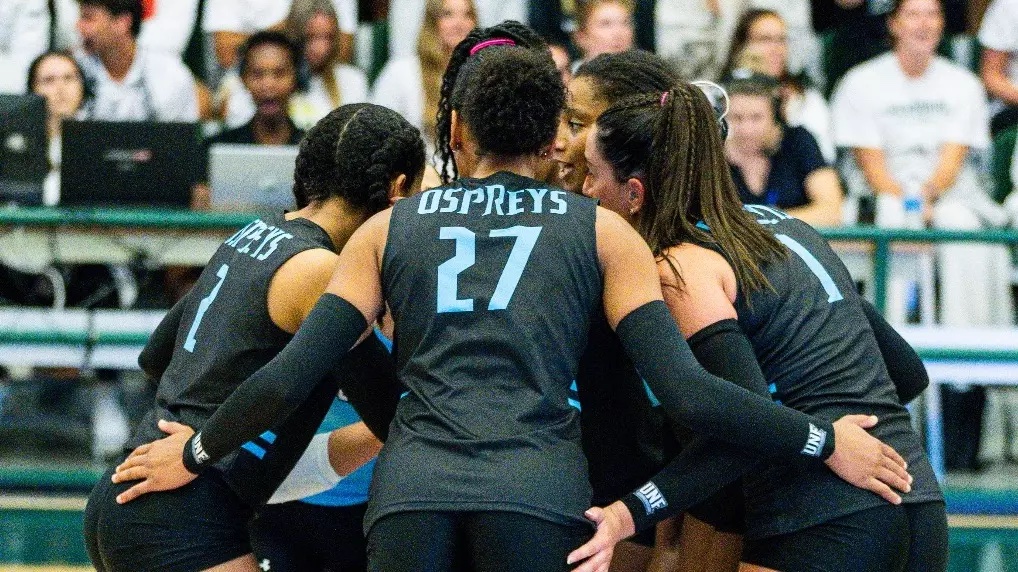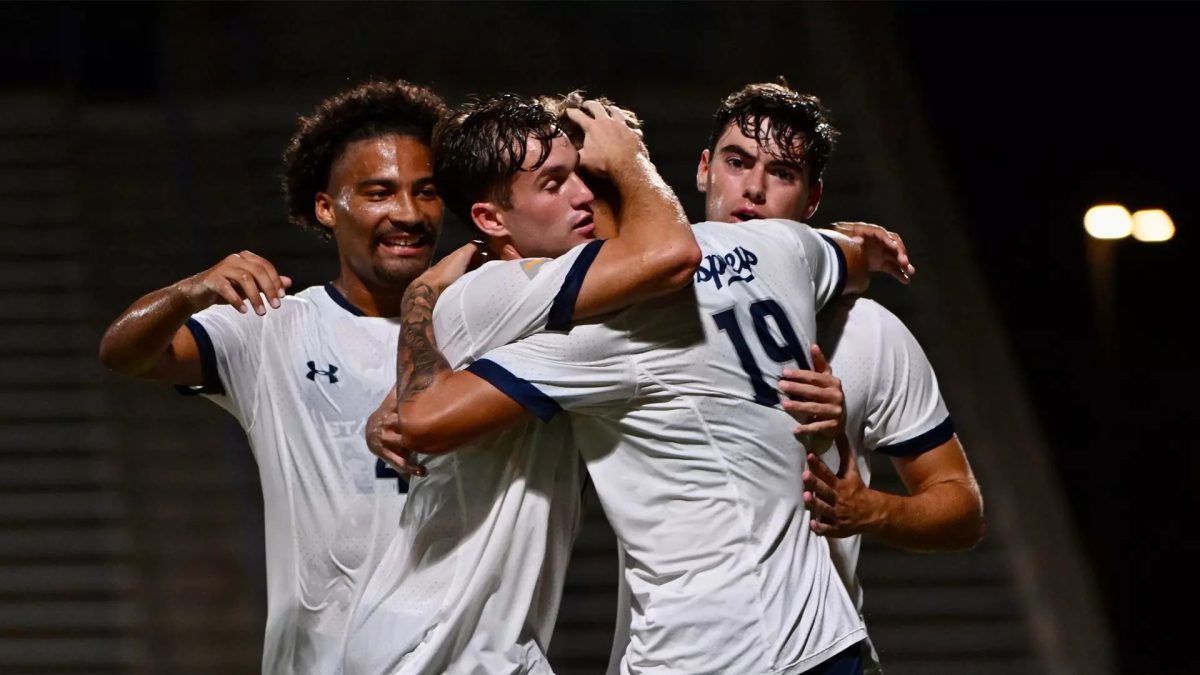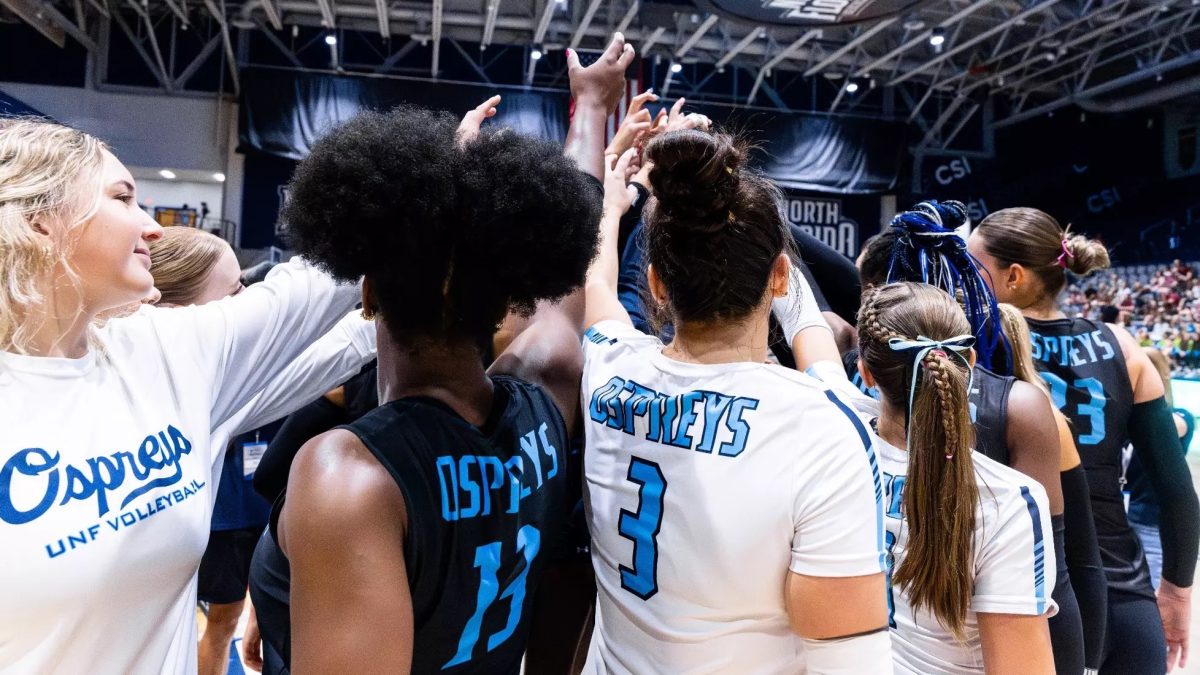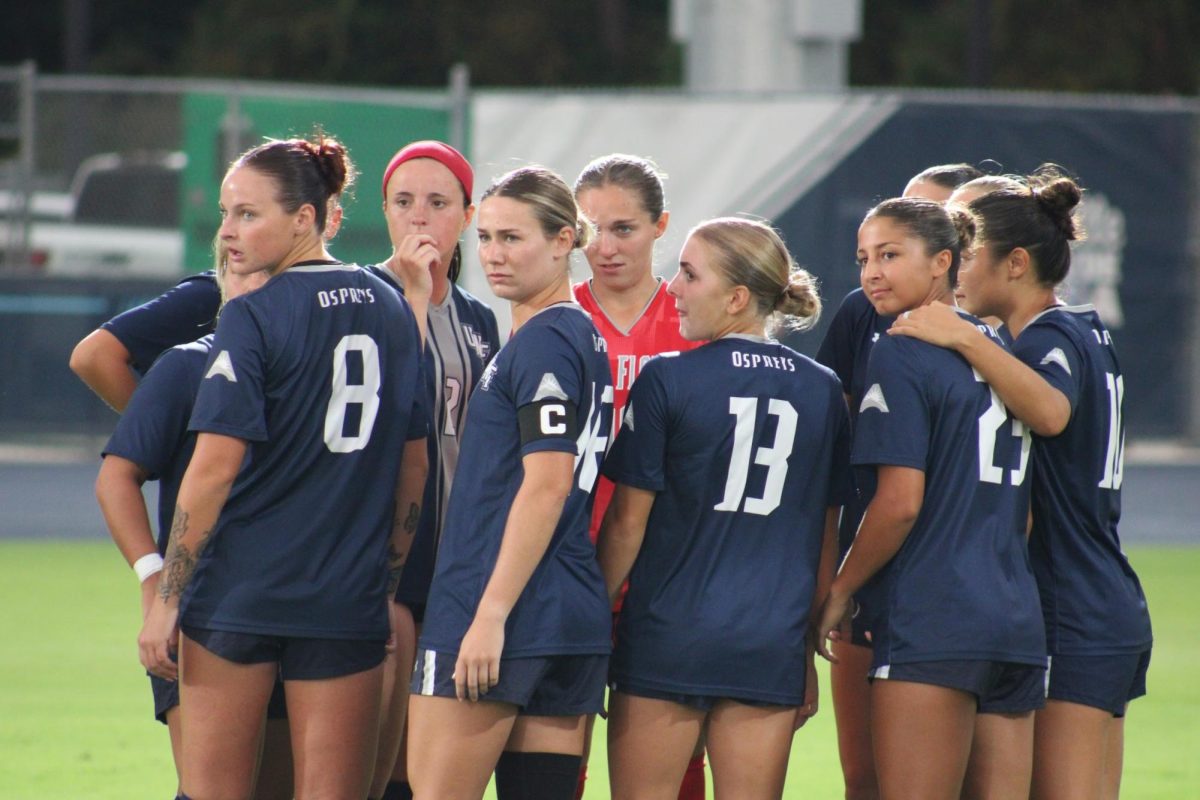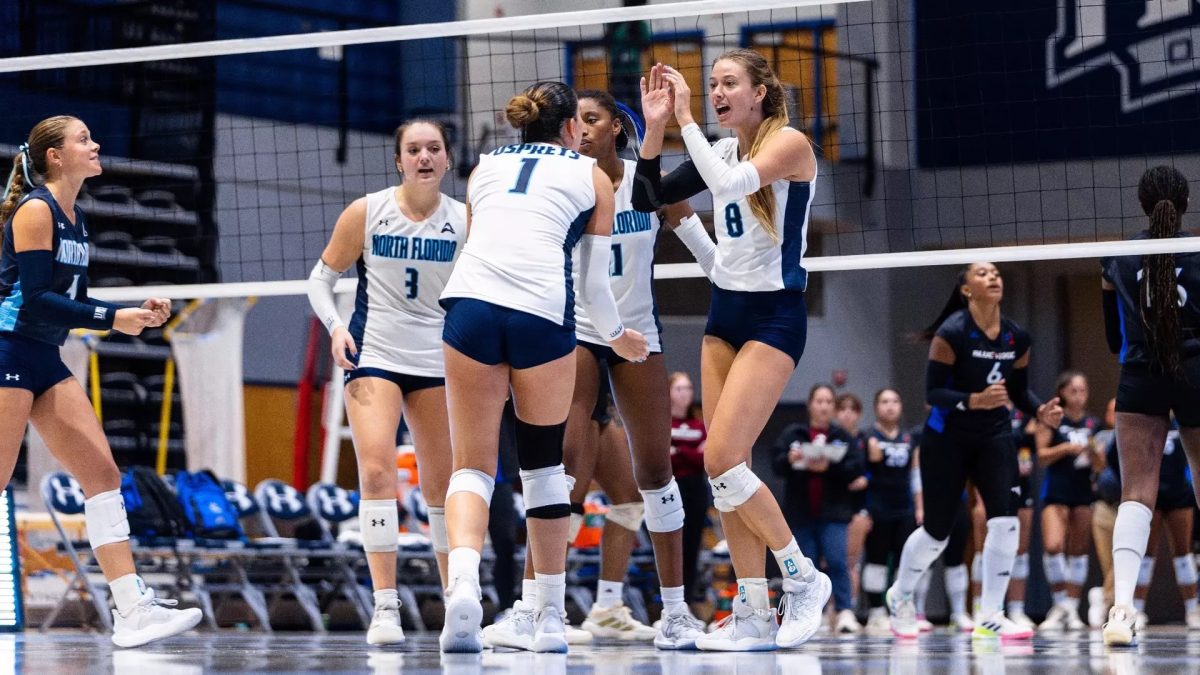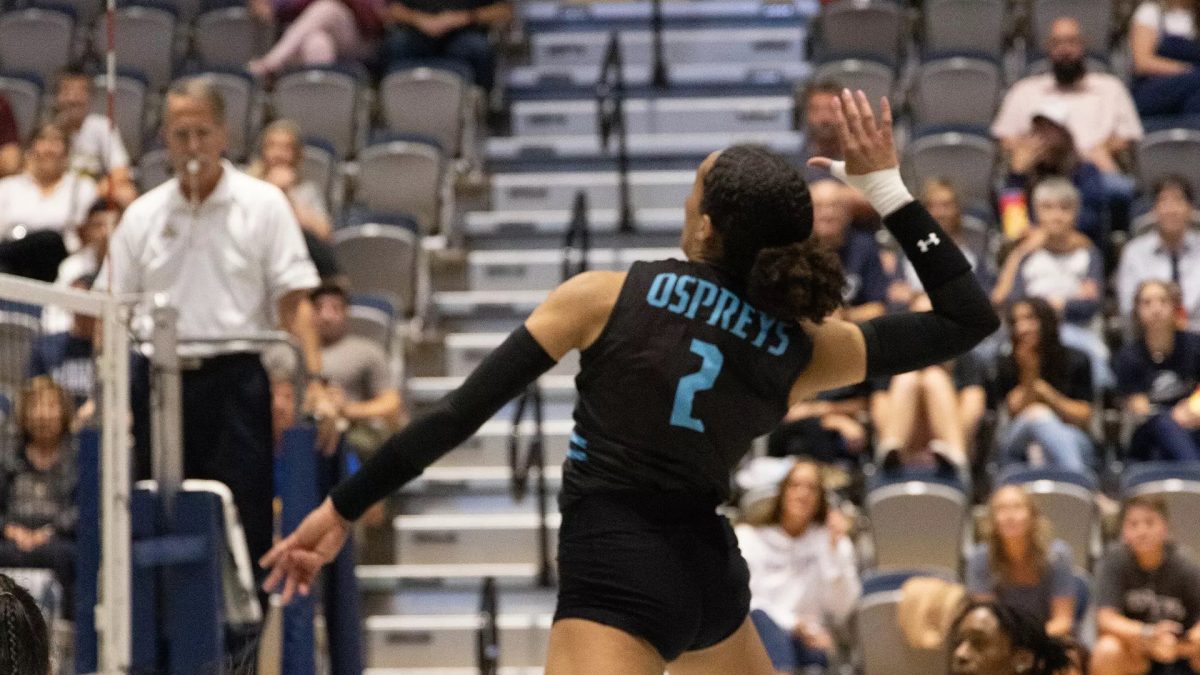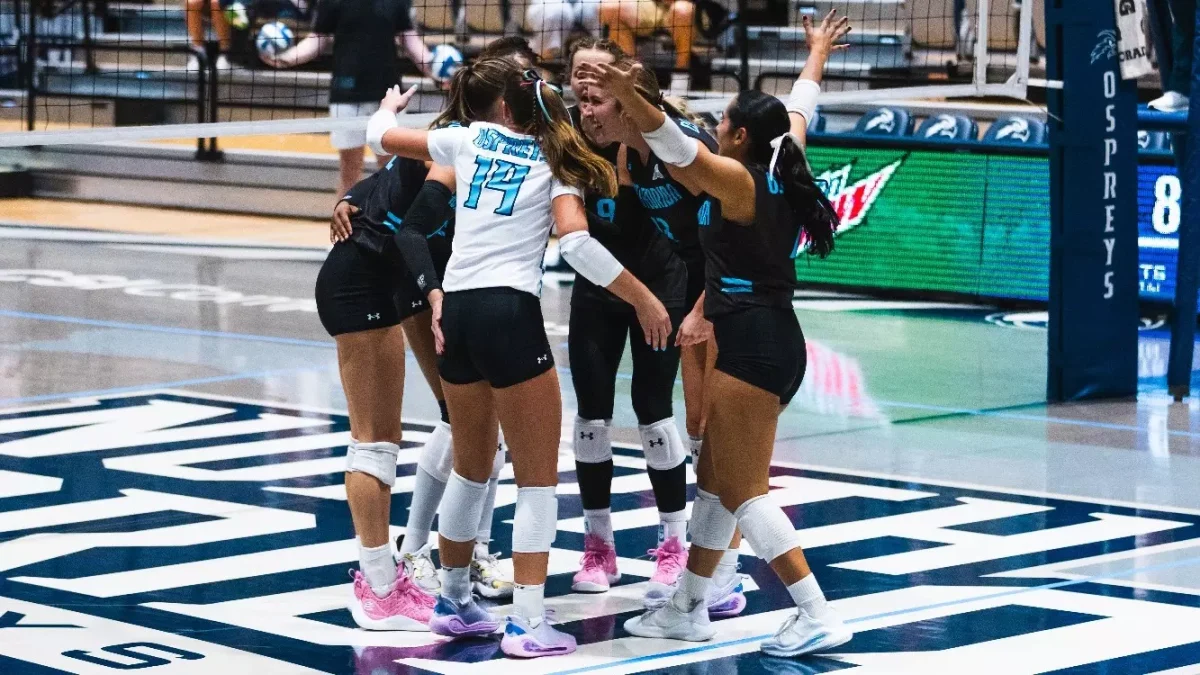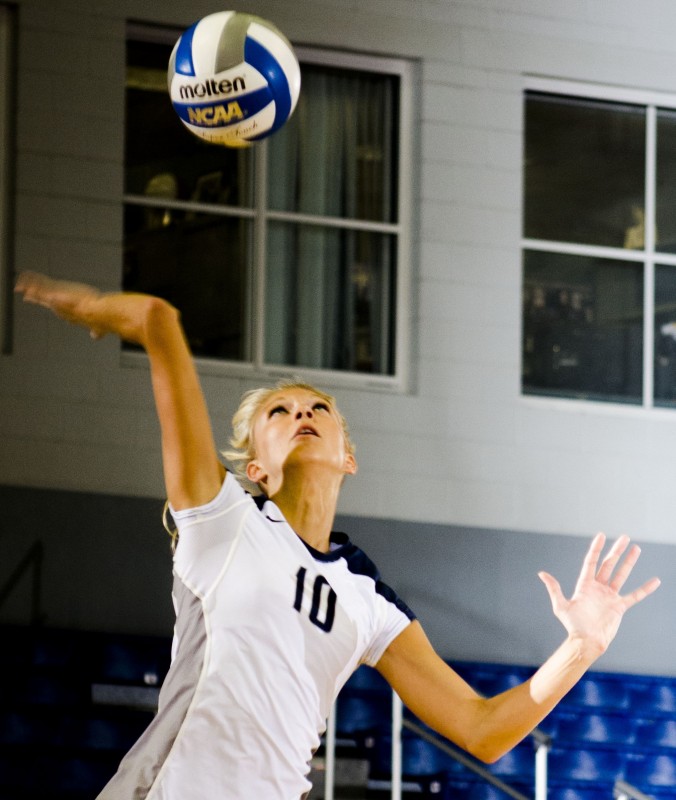
Dagnija Medina, UNF’s ace leader, elevates for a jump float serve.
Volleyball’s most important aspect of the game isn’t a kill, a dig or a block. The key to a strong offense and defense is the serve.
A strong serve can force your opponent to have a bad pass to the setter, which can give way to a defensive block. A serve can also cause an opponent to not set up their play properly and give you a free ball — an easy hit that’s only meant to get the ball over the net. Ideally, a successful serve may not be returned or even touched.
“The more pressure we can put on the opposing team [through serving] the better our blocking can set up and the better our defense can play,” head coach Steve Loeswick said.
There are three main serves in the game: a jump serve, a float serve and a topspin serve.
A jump serve uses a high toss that is usually several feet in front of the server. The server jumps into the air and strikes the ball with an attacking approach. One problem with a jump serve the increased chance of a service error. There are also different variations of jump serves, such as a jump float.
A float is a serve that doesn’t spin. This serve is volleyball’s equivalent of a knuckleball. The ball moves in an unpredictable way, making it hard to pass. The ball may move left, right or drop suddenly.
A topspin serve does what its name mostly says: it spins rapidly after contact with the ball’s top. A server must toss the ball and strike toward the top of the ball in a down and outward motion. In contrast with a jump serve, both of the server’s feet remain grounded.
Jump serves are used more in high level international play where players can hit the ball at upwards of 70 mph.
The way a ball is hit isn’t the only thing that determines the outcome of a serve. On the bench coaches give players hand signals that determine where the ball should be hit. UNF coaches have split the court into different sections and assistant coach Charlie Buzogany gives coordinating hand gestures to the next person serving.
The desired location of each serve depends on the opposing team. A struggling or weak opponent is a target to be capitalized upon.
A good server can make the difference in the game. If there are multiple good serves in a row, the team can go from being tied to holding a commanding lead.
“If we can get three to four points in a row it takes a lot of the pressure off of the team,” Loeswick said.
In UNF’s 3-0 victory over Stetson Oct. 2, Cari Whitmire did just that. In the second set, Whitmire entered the game with UNF up 5-4 and won five consecutive service points, including an ace.
Whitmire said she thinks a perfected float is the best serve in the game, and often utilizes a jump float.
“We have time set aside during practice to practice our serves,” Whitmire said. “The service game is important. I don’t think you can be perfect at it, but the more you practice, obviously the better it gets.”




